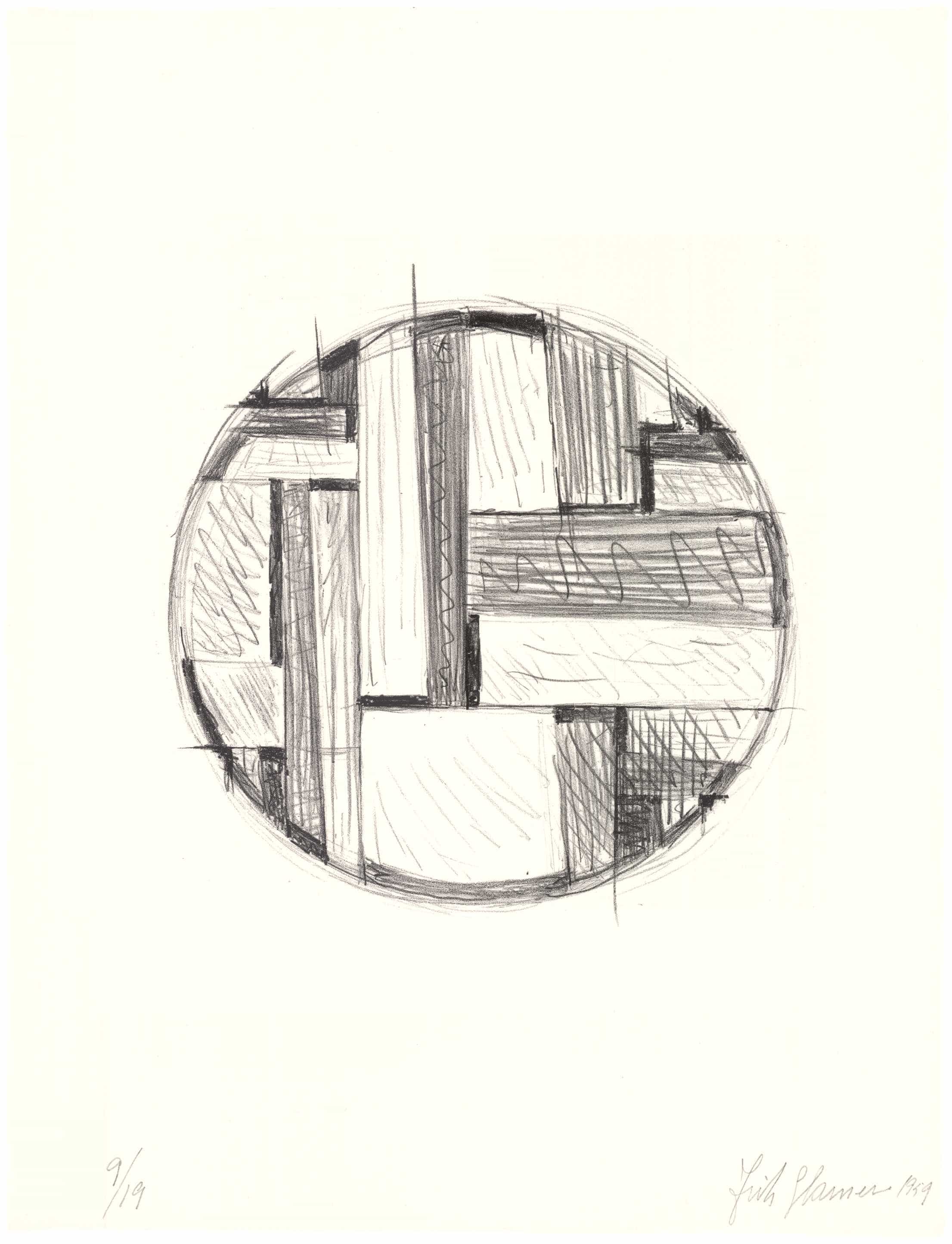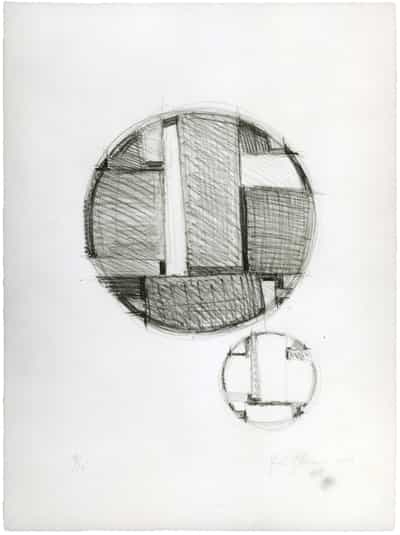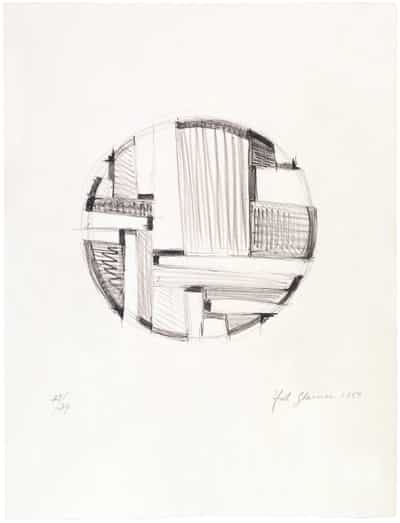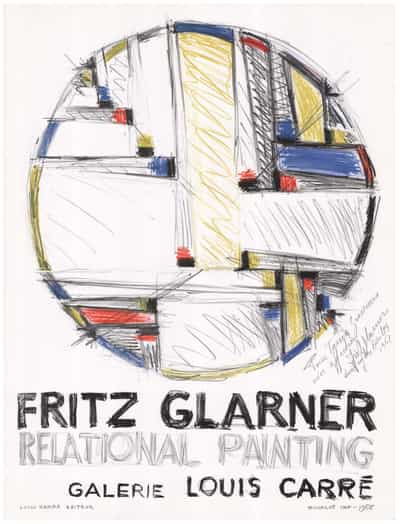About the Artist
Born in Switzerland and educated at the Reggio Instituto di Belle Arti in Naples (1914-1920), Fritz Glarner (1899-1972) did not make his first abstract painting till he was thirty-one. After this conversion, however, he became a lifelong devotee of geometric abstraction. During a stay in Paris (1932-1935) he joined the Abstraction Création group; after he immigrated with his wife to New York in 1936, he became a member of American Abstract Artists. Building on the tenets of de Stijl, suprematism, and the paintings of Mondrian, Glarner developed his own theory of abstraction, which he called Relational Painting. This theory simplified color use to blue, yellow, red, and gradations of gray; textural differences to slight gradations, and composition to forms suggested by the trapezoid.
Glarner and his wife came to America as war refugees, and settled on Long Island. With their similar experiences and shared interest in contemporary art, they became good friends with Tatyana and Maurice Grosman, and in 1958 Glarner was invited by the Grosmans to print at ULAE. He completed nine black-and-white lithographs during the following year, and in 1963 he turned to color lithography, producing Color Drawing for Relational Painting and Colored Drawing. Glarner continued making prints, incorporating his theories of abstraction, texts from earlier exhibitions, with drawings from his Time-Life Building commissions and observations about art and life until 1968 when he suffered brain injuries and was unable to continue making prints.



